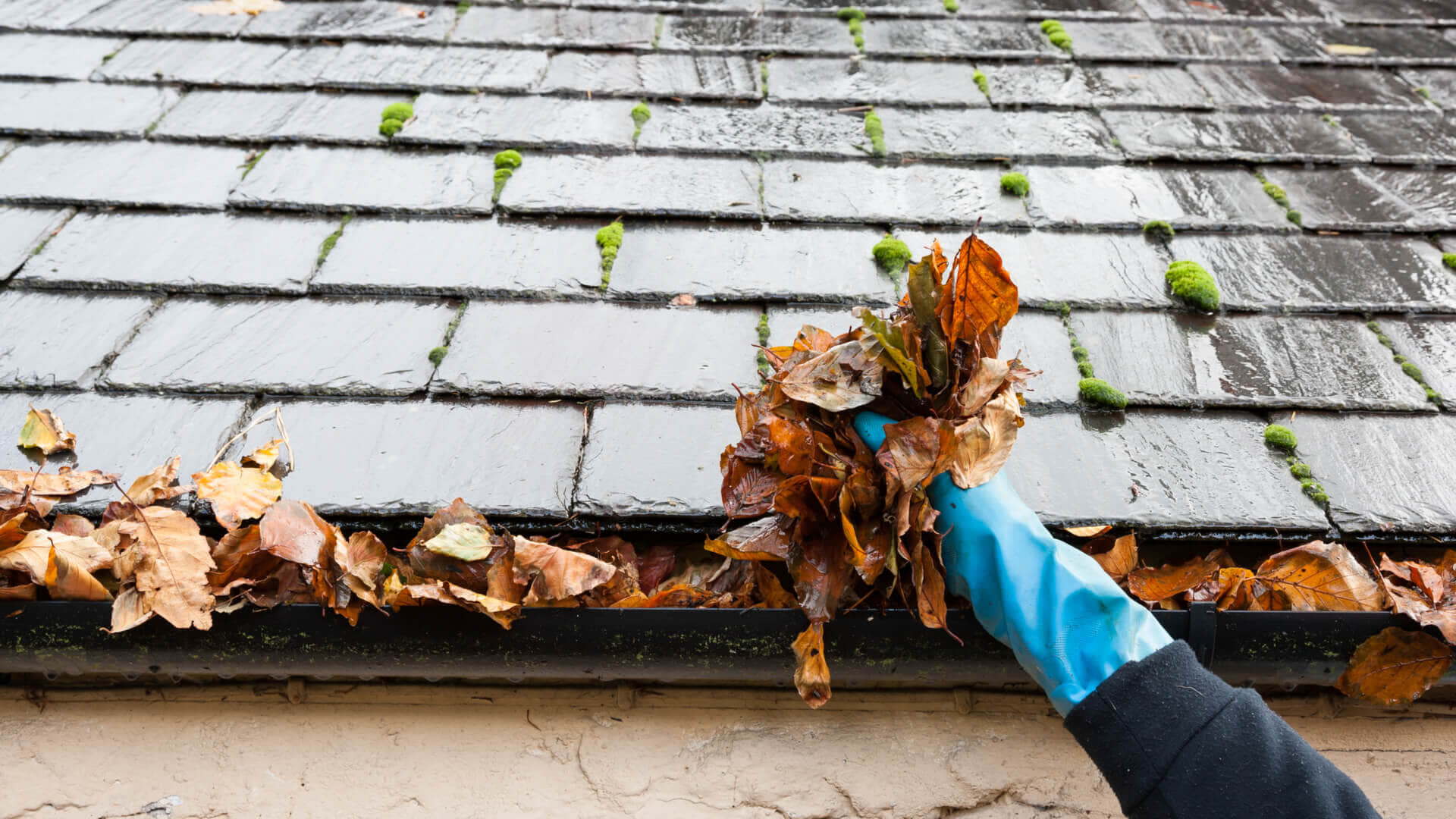The Top 8 Exterior Home Projects to Tackle this Spring
As spring arrives, the days get longer and warmer, as the natural world wakes from the slumber of winter. With this arrival of springtime, your thoughts should turn to the exterior of your home as it’s important to see what ravages your house has suffered at the hands of winter. Taking care of these outdoor maintenance tasks early means saving time before your summer sets in and it also means you won’t have to pay the price if they aren’t attended to by the time winter comes knocking again.
Ready to begin inspecting your home? Here are the top 8 exterior home projects to tackle this spring.
The Roof

Your roof is on the front line of defense when it comes to protecting you from the elements. Without a leak-free roof, all sorts of issues can develop inside the house and can leave you exposed to the cold and damp.
If you are feeling brave enough, drag out that tall ladder and get a close up look. If heights are not your cup of tea, grab a set of binoculars and scan the surface of the shingles to look for any signs of damage. You could also access the attic to get a look. Spying any gaps in the roof, where daylight is visible is never a good thing, as well as spotting damp patches on the timbers and walls.
If you spot any shingles that are broken or missing, don’t delay, get them repaired immediately. It’s always a good idea to keep some spare shingles in the garage for such occasions. Catching the problems now will prevent the need to have more expensive repairs done later, especially if it leads to significant timber damage that might need replacing.
You should also remove any noted build-up of moss and leaves, as roof shingles can sometimes deteriorate when trapped under such debris. If this debris is left to rot down, under the right environment (usually bright sunshine), it encourages new growth that can seriously undermine your roof’s integrity.
Exterior Walls

Whether you have wooden sidings, brick or concrete, the exterior walls of your home soak up plenty of punishment over the seasons. Wind batters and rain splatters them, and yet they stand firm, keeping the elements at bay like a giant protective shield.
To assess the condition of your exterior walls, look for damp patches, as these can be an indication that water has penetrated the walls. Look closely near windows, doors, and gutters as this is where the most likely entry points will be. Water stains could be an indication that gutters and downpipes are inadequately channeling rainfall away from the house.

You should also be on the lookout for pests. Often, small boring insects will find gaps and holes to make their homes. Once a colony of critters takes up residence, it can be hard to evict them. Make sure that any cracks in the exterior are filled with sealant or caulk.
Finally, place the side of your face against the wall and look along the length of the wall to spot any warped or loose boards, especially if you have wooden siding. The weather will penetrate any gaps, exposing and manipulating them until they become larger gaps, or the come away entirely.
Chimneys

Most chimney stacks are constructed of brick. The mortar between these bricks is vulnerable to the weather, and during sustained rainfall, the brickwork can become saturated and allow seepage of the water.
The good news is that bricks are excellent at drying out, but constant changes in temperature and moisture can have an adverse effect on the integrity of your chimney stack.

Check the mortar mortar between the brickwork, as it can become brittle and sandy over time, causing the mortar to simply fall away. If left unchecked, this causes water ingress and plant-life to grow, further increasing the vulnerability of the chimney stack. When the winter comes again, and the water droplets in your cracked chimney stack freeze, they expand, causing further damage to occur. If any vegetation is growing, make sure to remove it.
Notice a white chalk-like deposit that appears on your brickwork? This could be a sign of efflorescence, a by-product of moisture penetration, and may be an indicator of more significant problems.
Windows

Windows are one of the most vulnerable elements of the exterior of your house. They require constant maintenance and care. There are cheap and straightforward things you can do each spring that can prove effective in preventing long-term damage further down the line.
As windows expand and retract in the heat and cold, it puts a strain on the frames and joints. This is where water finds a way in. One of the tell-tale signs of a leak is moss growth on the exterior of the window frame; if you have double-pane windows, evidence of moisture can be noted when the inside becomes misted and makes it difficult to see through.

Painting and sealing your window frames area great way to keep wooden frames in tip-top condition because you thereby avoid the wood becoming rotten through water penetration, and protection the frames for years to come. When sealing, make sure that you get that sealant or caulk into every tiny gap and crevice. Sealing the windows in the spring solves a multitude of issues later down the line.
Faulty hinges and leaky catches are another way that your home suffers damage. Make sure that when the windows are shut, there are no drafts that indicate gaps. Simply drop a feather in front of the window from the interior to see if any air gaps exist. If the feather falls without disturbance, you have sealed windows.
Gutters and Drains

Gutters and drains are vital for channeling rainwater away from the house. They are the front line of defense, so keeping both free-flowing is a crucial spring job. Over the winter, especially during fall, leaves and vegetation can become lodged in your gutters, blocking the flow of water, and also limiting what goes down your downpipe into the drain.
Similarly, drains become clogged with debris causing the excess water to back up and spill onto the soil at the base of your home. This can cause several major problems if left unchecked.

Grab a tall ladder and inspect the gutters for excess foliage and debris. Scoop out any dead matter and check the entrance to the downpipe is also clear of matter. You should also remove any blockages from drains or covers. This might not be the most pleasant job in the world, but it’s vital to ensure a free flow of water. You can buy rods that screw end to end to create a large pole with a rubber disc on the end. Work it clockwise into the drain, adding sections as you extend further into the system.
Also assess the security of each gutter, as wild weather can sometimes work guttering loose. Wind especially causes damage, so check the fixings for loose guttering and re-tighten. Make sure that you attend to any broken sections of guttering, and if need be, replace with new.
Decks and Patios

In the summertime, a deck or patio is an excellent social space in the garden, but over the winter months it takes a beating with the weather. Mold, moss, and weeds grow in the cracks between patio paving, causing it to become uneven and loose. Decking is also prone to algae growth, making the surface of the wooden boards treacherous to walk on.
There is no substitute for a powerful jet-washer when it comes to that spring clean. Patios look like new and decks scrub up clean. Scrubbing your patio or deck free of green mold and algae, then staining the boards and sealing them, protects it from the ravages of the coming seasons.
Regular sweeping is also beneficial as it can keep your deck or patio free of debris all year round and stops the build-up of damp leaves and moss that can rot your boards and cause weeds to grow.
Trees and Foliage

A well stocked and mature garden makes for a pleasurable space, but having trees close to your home poses problems that will need regular maintenance to avoid. During the winter months, overhanging trees tend to drop debris on your roof and gutters, causing water damage when rainfall has no clear channel to drain away.
Branches could also lift shingles and damage fascia boards, especially in strong winds. This is also an open invitation to critters and wildlife looking for a warm space to bed down for the winter. Let’s not forget tree sap as well: that sweet, sticky liquid is devilishly hard to remove once it drops onto your roof or walls, and it is a considerable draw to a number of stinging insects, who like to make their nests nearby.

Cut back any limbs that extend to the roof of your house. You can use specialist tools like extended saws, or chainsaw cutters on extension poles, or you could get a sturdy step ladder to do the job.
If a tree looks diseased or is dying, call in the doctor. Tree surgeons, or arbor horticulturists to give them their full title, are needed when the tree looks diseased or dying, or the limb to be removed is unusually large. It’s important to recognize your limitations when tackling jobs like this because if you make an error, you risk causing significant damage to your property and your health.
Foundation

While most of the emphasis on spring jobs involve looking up at the top of your house, one of the most important things you can do is to look down at your foundation. Harsh winters or poor gutter maintenance can wreak havoc on your foundation and can give water a way into your home.
Look for cracks in the concrete as this is an indicator that your foundations may not be doing so well. While they aren’t uncommon do watch for cracks that appear to be widening. Usually, applying filler or sealant would suffice, but not always, so it’s worth knowing when to call in the professionals to give your foundations a thorough examination.
Ss previously mentioned, wet spots are bad news, especially if you want to avoid termites. These critters love moist soil and particularly the soil that your foundations sit upon. Damp spots could also signal issues with drainage and gutters, so once you’ve finished looking down, try looking up.
Final Thoughts
We all love the advent of spring because it brings us out of hibernation and back into warmer days, shorter nights, and the enjoyment of the outside world. Using this time to attend to those seemingly unimportant tasks could save you big bucks later in the year and avert a crisis in the process, so taking the time to inspect your exterior for maintenance considerations is vital for keeping your home protected against the elements.




